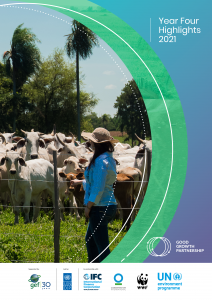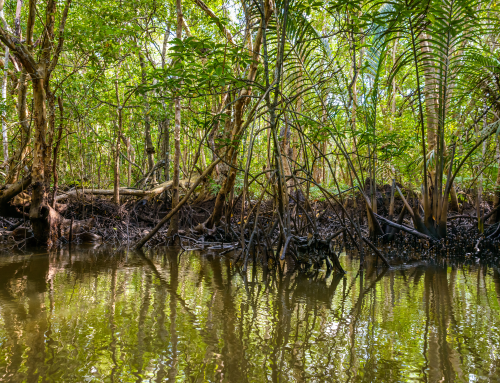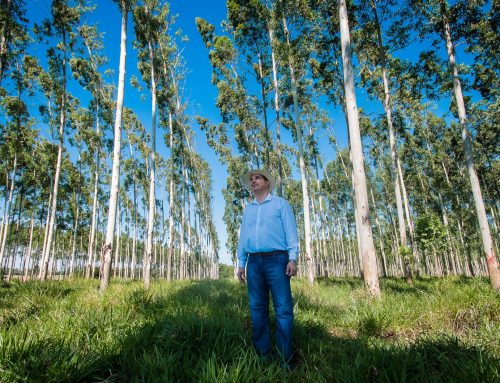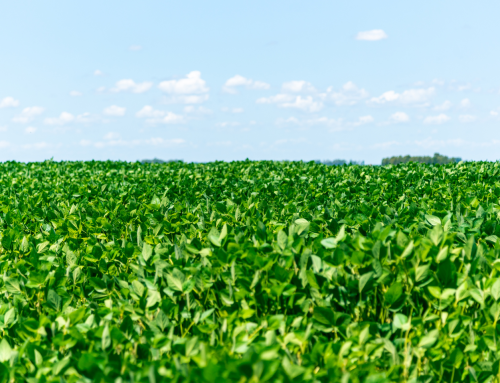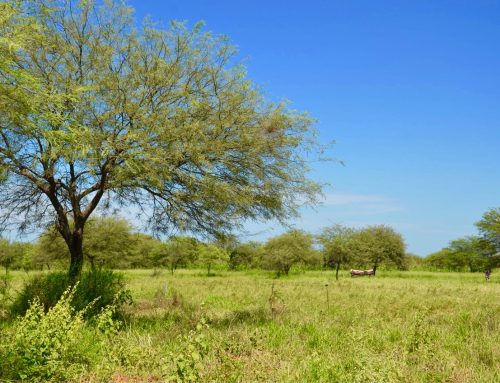A time for reflection on four years of innovation and collaboration
This blog was written by Andrew Bovarnick, Director of the Good Growth Partnership, Global Head, UNDP Food and Agricultural Commodity Systems Practice.
Creating a sustainable food and agricultural system is one of the most critical challenges faced by humanity. A major global transition is needed in food and commodity supply chains if we are to build a sustainable future. In the 21st century, the technology exists, the technical capacity exists, but a common vision is still needed and, in particular, we need to unite around taking deforestation out of commodity supply chains. To live in a world where the food we eat is produced in harmony with nature is what we must strive to achieve.
The Good Growth Partnership, now in its fourth year of innovation and implementation, has demonstrated the potential for effective collaborative action for resilient and sustainable commodity supply chains. While most initiatives focus on one lever of change, the Good Growth Partnership supports and inter-links all the main levers along key commodity supply chains so they are pulled simultaneously. We believe only such a systemic approach can create the change to which we aspire. Instead of treating production, demand and finance interventions as separate building blocks of change, the Good Growth Partnership is distinctive because it addresses them as fully interconnected.
In the fourth year of the Good Growth Partnership, it is a time to reflect on what has worked and what remains a challenge. Even with our meaningful successes there is still so much to do as systems change is complex and long-term. We continue to learn, refine, adapt, and come anew at the challenges we face with innovation and building on our momentum and trust with our partner governments. We see these four years as just the beginning and intend to keep building on the foundations we have established over the years.
Below are my main take-aways of our four years of partnership, all of which remain fundamental for the next stage of the Good Growth Partnership.
– Adopt a systems approach – We tend to simplify systems that we do not fully understand, and which are difficult to navigate their multiple interdependencies and interrelations. However, to affect real change, we need to embrace complexity and uncertainty, and to use more systems tools and approaches in our ways of working to best identify the most powerful levers of change, while recognizing that environments are evolving and changing and, thus, we must be agile in our response.
– Optimize multi-stakeholder collaboration – Commodity supply chains are complex systems with a multitude of actors involved, generally with different and sometimes conflicting interests. A genuine and inclusive multi-stakeholder collaboration approach is fundamental to build trust, understanding, create a common vision and thus move the needle. Even though this can take time, trust-building between stakeholders, and specifically including the most marginalized and vulnerable, is at the heart of any true, inclusive and long-lasting collaboration.
– Support multi-scale and multi-sector coordination – Connecting governance between various levels, from landscape to regional, national and global, and different sectors is challenging but is vital to bring lasting change. This means working with local, subnational and national governments and across ministries, such as those of agriculture, environment, finance, public works, labour, education, health, gender and more.
– Activate and link farmer-centric incentives – Change is a complex human process. Even though we hear every day the urgency to change behaviours, multiple barriers, interests, and power dynamics can get in the way and slow down efforts. Incentives of various types and at various levels exist and encourage sustainable production, but they are often not fully understood, aligned or implemented. I believe the most effective way to accelerate a systemic shift is to align incentives for producers across and within the levers of change that we have identified for sustainable production, from market and financial drivers to regulatory and more human-centred and value-related aspects.
– Enhance partnerships – Working alongside Conservation International, the Global Environment Facility, the International Finance Corporation, the United Nations Environment Programme, the World Wildlife Fund and many others has been of incredible value. Partnering requires time to build trust and relationships, yet the level of collaboration reached after four years allowed us to go much further than we would have done individually.
With the prospect of carrying on this important work, we are co-creating with partners plans for a second phase, as we acknowledge we are only in the middle of our journey of systems change. We view this new phase of the Good Growth Partnership as a major contributor to the implementation of United Nations action agenda on deforestation and conversion free supply chains through the Food Systems Summit, the Climate Conference of the Parties (COP) 26, the Biodiversity COP 15 and the 2030 Sustainable Development Goals Agenda as a whole. If our work resonates with you as a potential new partner or donor, we invite you to join us in this journey to place sustainability and good growth at the heart of commodity supply chains.

